

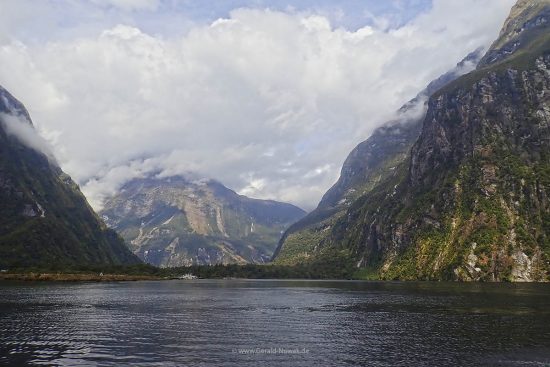
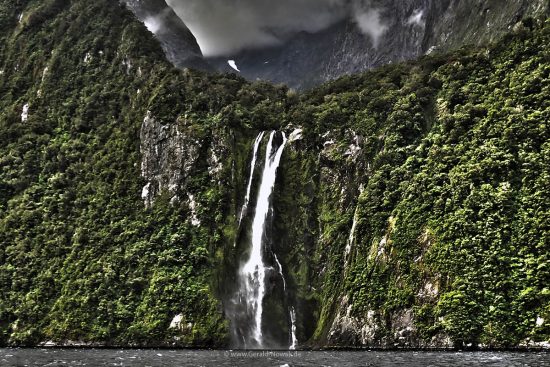
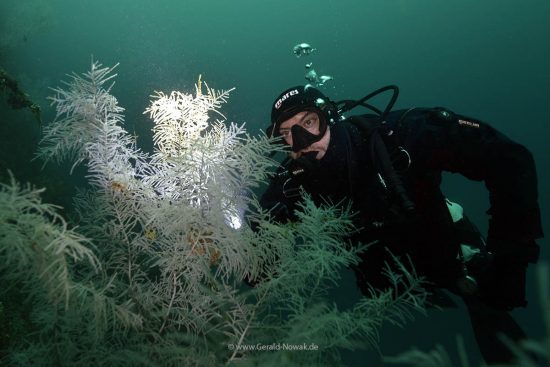
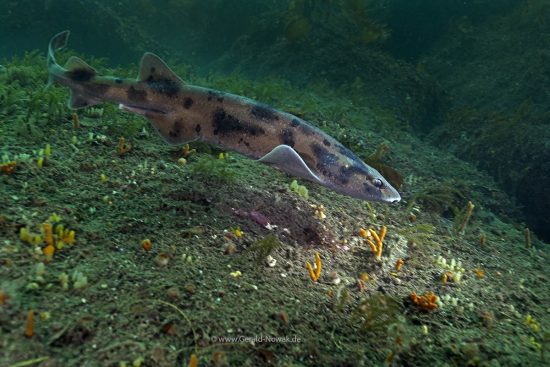
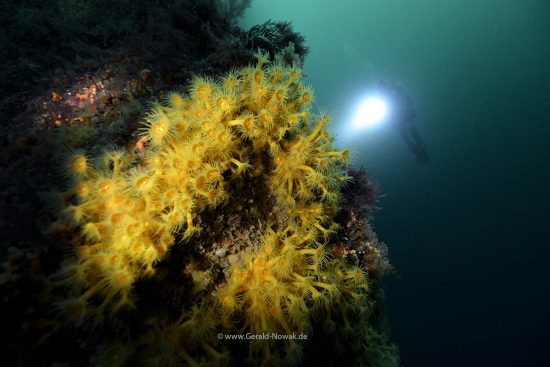
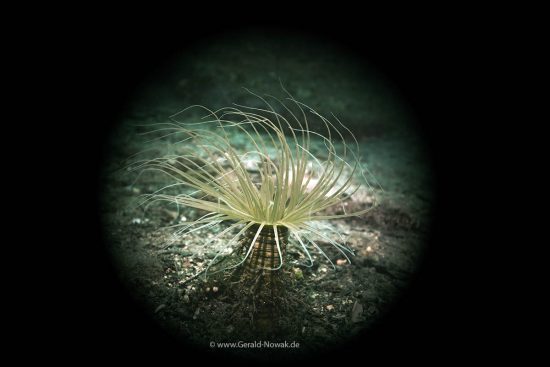
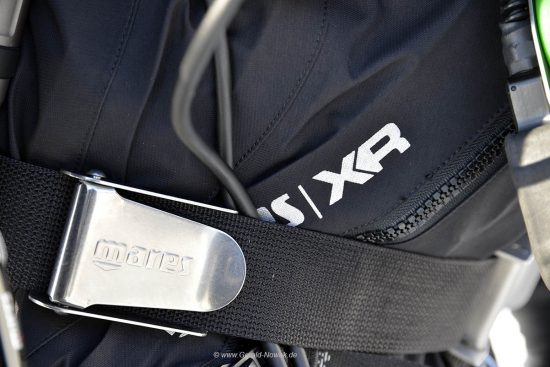
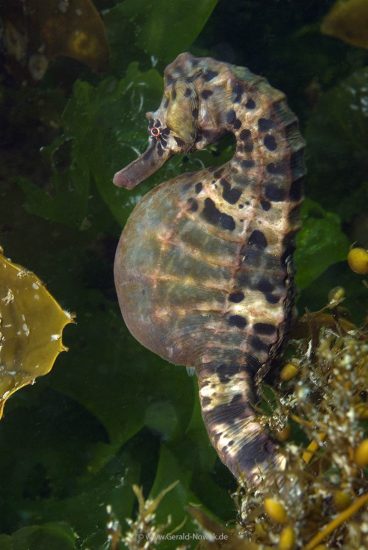
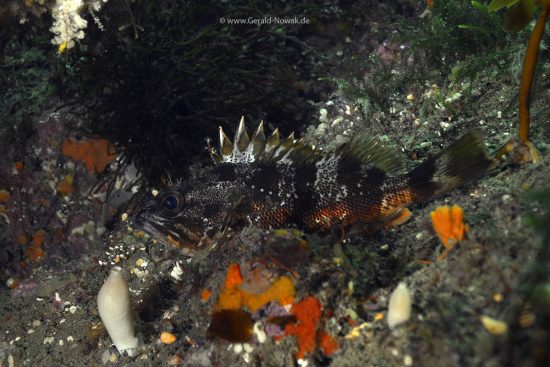
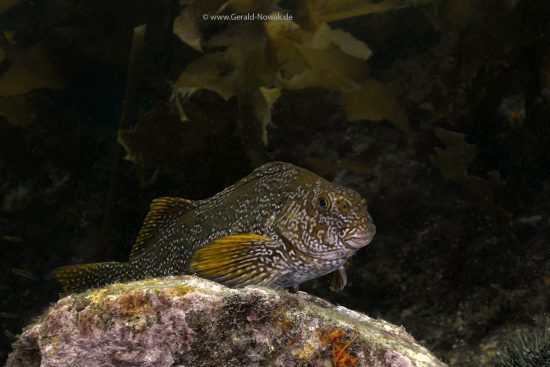
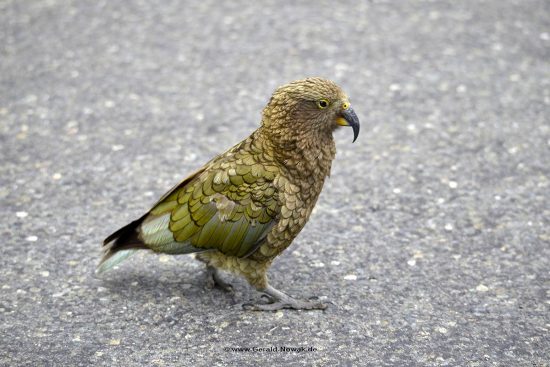
We are now far at the south end of New Zealand. More specifically in the southwest, in the world of the fjords. Here, the first fjord originated in prehistoric times following mighty glacier movements in the ice age.
The 14 fjords of the southwestern corner of New Zealand were created some 100,000 years ago. Milford Sound is the northernmost and extends 15 kilometers from the Tasman Sea into the hearthland. The rock walls on its flanks are up to 1,200 meters high. Miter Peak is the highest at 1,692 meters.
The fjord region is one of the rainiest areas on earth. There is an annual rainfall of up to 8,000 mm, which is why diving here in the fjords is so different. The freshwater layer can be up to 15 meters, which is due to the density of the freshwater on top of the saltwater. Depending on the time of year, this can mean that even in the daytime it's dark below the freshwater layer.
For a long time it has been a dream of mine to dive here and to experience what's bustling in the depths for myself. On my last trip I already tried to book a place on the small dive ship. There is only one base that offers diving here and the space on board is very limited. This time I wanted to go for sure and had already
booked months in advance.
Lance and Simone are the owners of the base. Simone is German and met New Zealander Lance in Queenstown years ago where love struck. Simone stayed and moved to Milford Sound with Lance when daily shuttles from Queenstown became too much for them. Nowadays, during the dive season, they do two dive trips per day. They offer a two-tank-dive in the morning and a single dive in the afternoon, if required. Like the big excursion boats, they drive along the fjord towards Tasmansee. Here at 'Descend Diving' the sightseeing tour is complimentary.
We dive in a small bay close to the Tasman Sea. The freshwater layer is surprisingly thin. At only 6 meters deep we have already reached the saltwater layer and it is suddenly clear. It is not completely dark as expected, but a rather dull light. Here, the first black corals have already settled and grow larger with the increasing depth. The water is greenish, but at just under 15 meters the visibility is very good.
After the dive I will have to drive back over the 800 meter high pass to Manapouri, so I stay above 20 meters depth. Nevertheless, it seems that I am in great depth when I inspect the underwater world. The water temperature is a bit fresh at 14 degrees and I am glad to have my Mares XR dry suit with me.
Towards the end of the short dive, as we come across kelp, we encounter a ground shark. Carpet sharks are very common here (Cephaloscyllium isabellum). Other sharks are also found here regularly - small spiny sharks and ground sharks. Large pelagic animals are also found, but they are rather rare. More common are sevengills sharks which are found deep inside the fjord, where visibility is rather low and diving is less attractive. There are also rays, seahorses, octopus and kelp reef fish. Even friends of the little nudibranches get their money's worth here. The beautiful Jason mirabilis nudibranch can be found almost everywhere.
For me it was a great experience to dive here and I will definitely come back on my next visit. Next time I would like to stay several days to go in search of the sevengills sharks.
Thanks to Lance and Simone for giving me the opportunity to get to know their diving world. Although above water thousands of tourists visit Milford Sound every day, at Descend Diving you are in very small groups and you can be sure of no other divers underwater.
 Gerald
Gerald 22nd January 2018
22nd January 2018